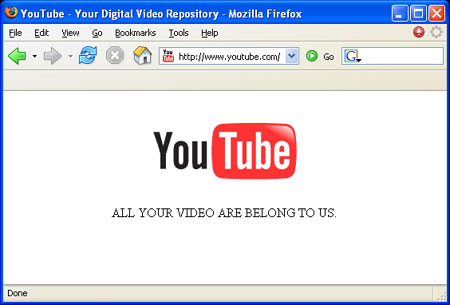 By Richard Norman
By Richard Norman
A couple of articles are out today about American politics and efforts to harness youth-oriented online media. As we saw from last year’s campaigns, websites like YouTube can strongly influence public perception of candidates by feeding the enormous appetite of people everywhere to see public figures humiliated or treated with irreverence. Generally, I think this is a very bad thing. However, politicians, particularly those victimized by YouTube, the Comedy Central shows, etc, aren’t able to make this point without appearing humourless or, worse, as sore losermen.
One strategy might be to play along. To have a laugh at one’s own expense. This, as Rahm Emanuel, rightly concludes simply will not work. The new Gotcha Media does not allow any reciprocity. Its aim is a public dressing down, a deconstruction of profile, a humiliation. But unlike, for example, army hazing, after the humiliation there is no ‘graduation’ into a club or select circle. The video is posted online for eternal dissemination. The only solution is to avoid such outlets altogether. And so Emanuel has strongly suggested freshman Democrats do not appear on the Colbert Report.
"He said don’t do it ? it’s a risk and it’s probably safer not to do it," said Rep. Steve Cohen. But the freshman lawmaker from Tennessee taped a segment that last week was featured in the 32nd installment of the "Better Know a District" series. Colbert asked Cohen whether he was a black woman. He isn’t.
While not playing along might reduce the ‘risk,’ simply producing and distributing traditional campaign videos via YouTube is no solution either. People do not actively seek out political advertisements, they seek out confrontation and spontaneity (they’re already bored, remember?). Today’s Washington Post has an article about politicians’ failure to spread traditional messages using untraditional distribution. For example:
Not one of the videos made by John Edwards’s campaign, for example, matches the popularity of the one showing the former senator combing his hair before an interview to the tune of "I Feel Pretty." That video has been viewed more than 135,000 times since it was posted on YouTube in November. Edwards’s most popular official video, of his announcement in December that he’s running for president, has been viewed about 116,000 times.Similarly, Clinton’s most watched HillCast, titled " Roadmap Out of Iraq," comes nowhere close in popularity to the video showing her singing " The Star-Spangled Banner" off-key at a rally in Iowa. The HillCast has been viewed more than 15,000 times since it was posted on Feb. 17, the out-of-tune moment nearly 1.1 million times since its posting on Jan. 27.
